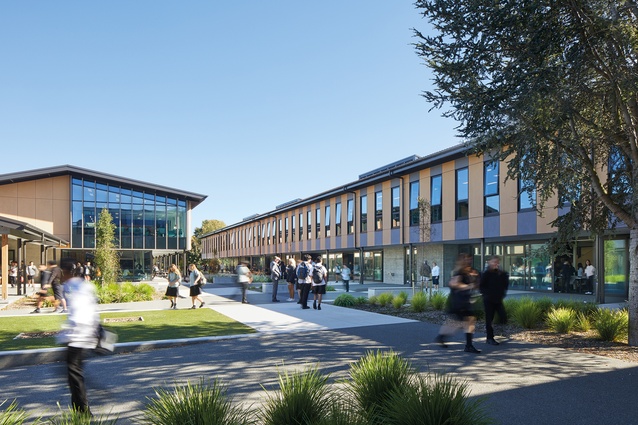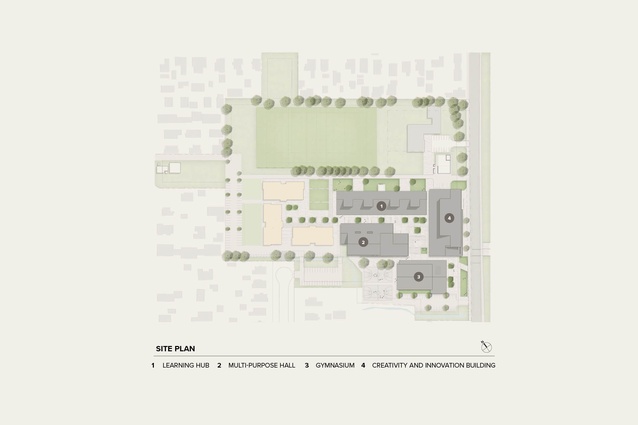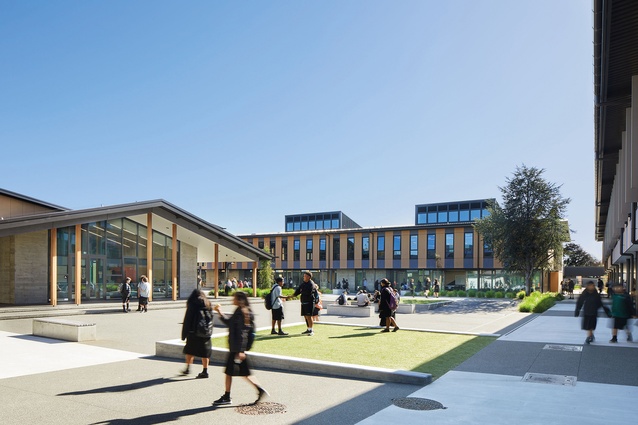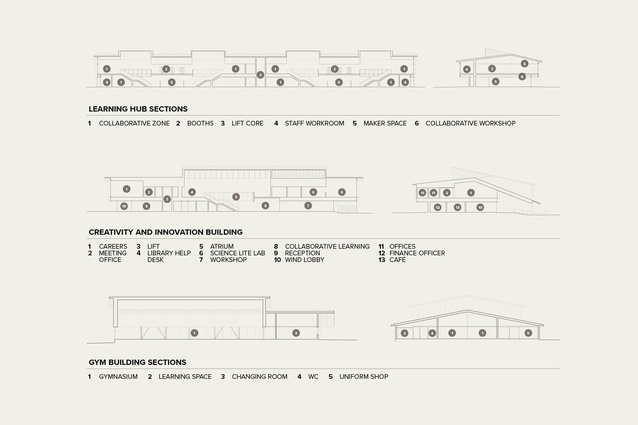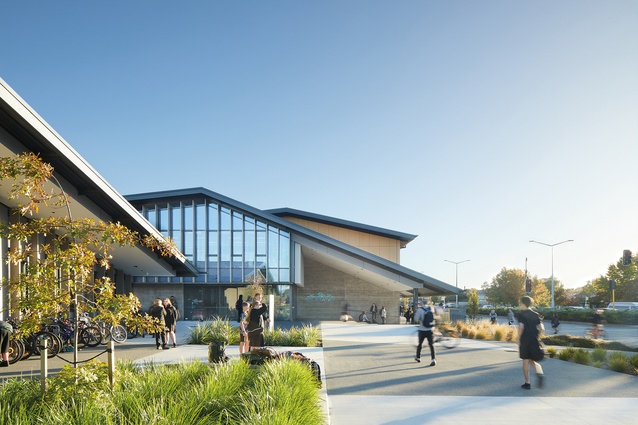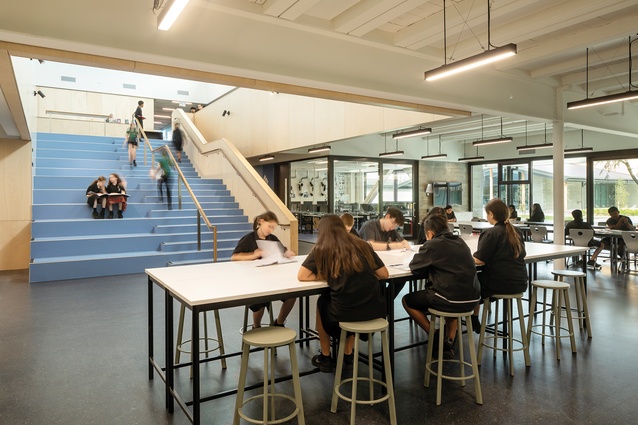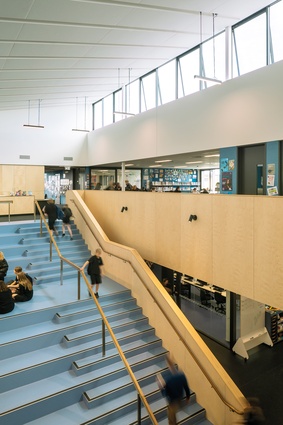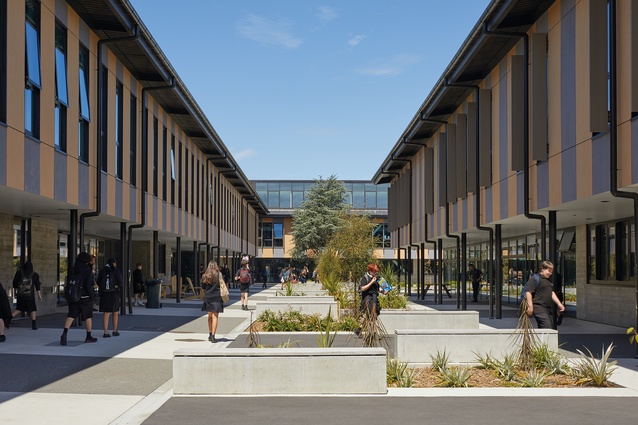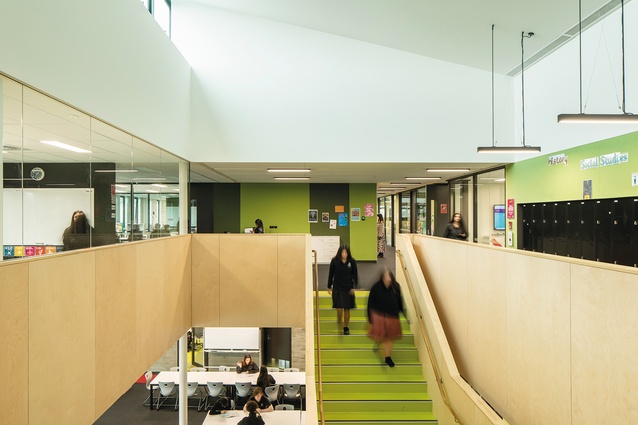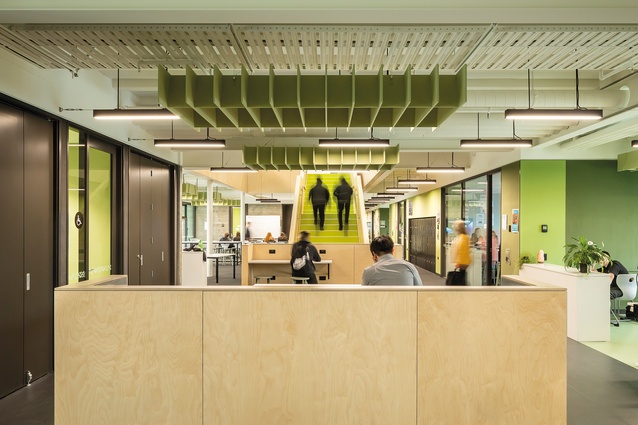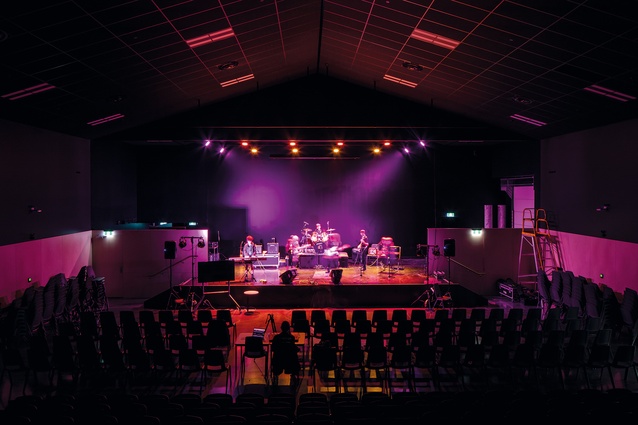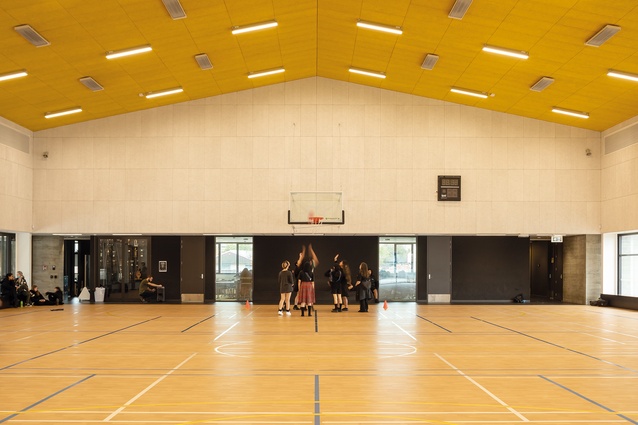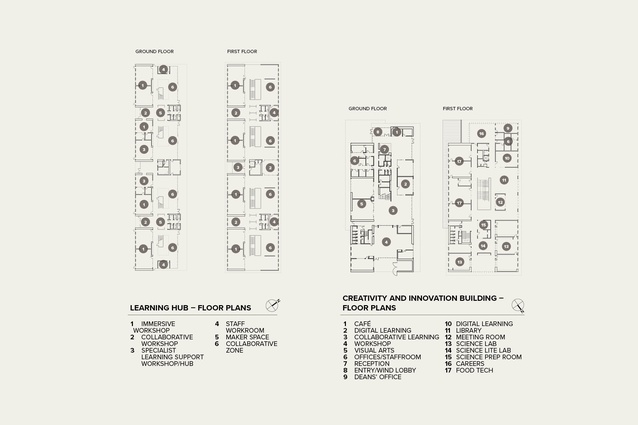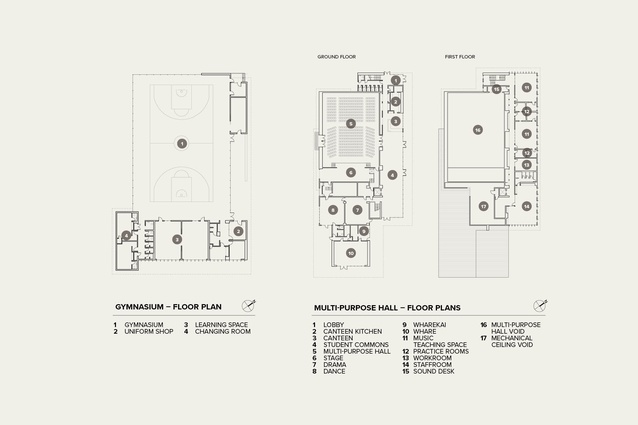Communities of learning
Te Aratai is a college with a proud history. Originally known as Linwood College and founded in Christchurch in 1954, it was the first coeducational secondary school started in New Zealand after the second world war.
It embodied a progressive vision in the post-war baby boom times, optimistic for a new future moving beyond the horrors of the previous decade: a place less about the traditions of the past but more about a future where all were respected and could participate in education equally.
These founding values have persisted through various ups and downs that schools experience over time. One of the most profound downs was the 2011 Canterbury earthquakes, which struck Linwood College hard, leaving its buildings devastated. The school community led a nomadic life, starting out by sharing with Cashmere High until temporarily moving to Avonside Girls’ High School’s old site after that school had relocated. It was an unsettling time; however, the promise of a full rebuild on the college’s original site was the big hope on the horizon, keeping spirits up for revival.
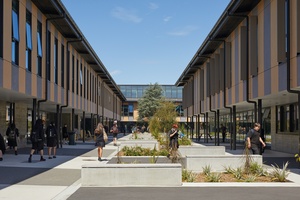
The opportunity to start virtually from scratch and re-imagine how learning could happen in the 21st century, yet still keeping the essence of what Linwood College was about, was a unique and exciting challenge: one that the college took seriously. It embarked on a thorough and comprehensive community consultation process that took place before the design stage began. It asked questions like: “What do you value for your kids into the future?”
The school visited the local shopping malls and markets and spoke to many people. A staggering 1200 conversations occurred during this time, all aimed at seeking a deep understanding of what education should be like for the surrounding community. In addition, a rich cultural narrative was gifted to the college from the local iwi. Supported by the Ministry of Education, this process contrasted strongly with the PPP (public private partnership) school rebuilds occurring at a similar time, which tended to fast-track consultation in the desire for speed of delivery.
“The key concept that emerged was respect for community within the school and beyond the school to a global level. This was recognition that the pupils are part of a diverse community wider than just the school and that the college is a place that is inclusive of and aware of a wider social, economic, ethnic, cultural and global world.”
The ambition to find out what the community truly wanted from its local school, resulting in an in-depth understanding, meant the finished product had a real sense of ownership and belonging. This dense and rich resource formed the essence of the rebuild concept. The key concept that emerged was respect for community within the school and beyond the school to a global level. This was recognition that the pupils are part of a diverse community wider than just the school and that the college is a place that is inclusive of and aware of a wider social, economic, ethnic, cultural and global world. The principal realised that being part of a school can too easily seem as though you are living in a bubble. It is bursting this bubble to look beyond that was the aspiration while not forgetting where the college community was and where it had come from.
So how did the architects for the project, Architectus, translate this ambitious, inspiring groundwork and passion into the physical reality of the build?
It was the idea of community that drove much of the thinking from a macro to a micro scale.
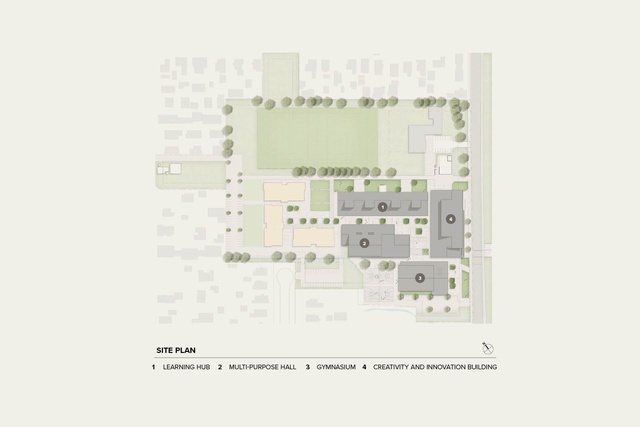
The master plan was arranged around a set of courtyards and outdoor streets: places where everyone can gather, meet and interact. This is not necessarily unusual in school design but it is done here with a real eye for the scale of the spaces and quality of the edges. The ground floor is either concrete or glass, to give a sense of permanence and robustness, balanced by transparency. These materials are mostly set back behind a colonnade, providing a pleasant, layered transition between outside and in. This concept of sheltered outdoor spaces extends to the street front with a very generously scaled entry canopy and colonnaded classroom block and gym facing the street and neighbourhood beyond. It is a gesture of welcoming to the community, unlike some schools that turn their backs and put up gates as defence mechanisms against the outside world.
At the next scale down, this approach is followed through with the type of rigour and clarity for which Architectus is known.
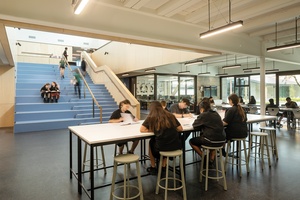
Most buildings are arranged with a central circulation area, double-height with stairs, under a top-lit clerestory, driving light and air deep into the heart of the spaces. Arranged around these centres are the learning spaces, grouped like a communal gathering around a shared space. These learning spaces are flexible with a variety of closed, semi-closed and open spaces for learning. Not the formless, large, carpeted barn space or traditional cellular classrooms, this hybrid caters for all sorts of learning needs and opportunities. This nuanced approach is where space-planning and pedagogy in education is heading nowadays; it avoids the ideological dogmas that have plagued educational planning and thinking in the past. These circulation nodes also break up the scale of this large school designed for 850, now housing around 1100, thanks to its popularity. The smaller communities of learning become like schools within schools, giving a stronger sense of belonging to the students but with an awareness of other diverse communities beyond.
“These learning spaces are flexible with a variety of closed, semi-closed and open spaces for learning. …This nuanced approach is where space-planning and pedagogy in education is heading nowadays; it avoids the ideological dogmas that have plagued educational planning and thinking in the past.”
Even some of the smaller details reinforce the sense of individuals and small groups participating in a larger collective. The upper-floor windows are arranged in a regular series of vertical bands, ostensibly for cost reasons but with the happy outcome that they reflect a human proportion looking down and congregating around the central outdoor areas.
The design is also carefully detailed to express how it is constructed and structured in a rational, logical way: also a definite Architectus trait.
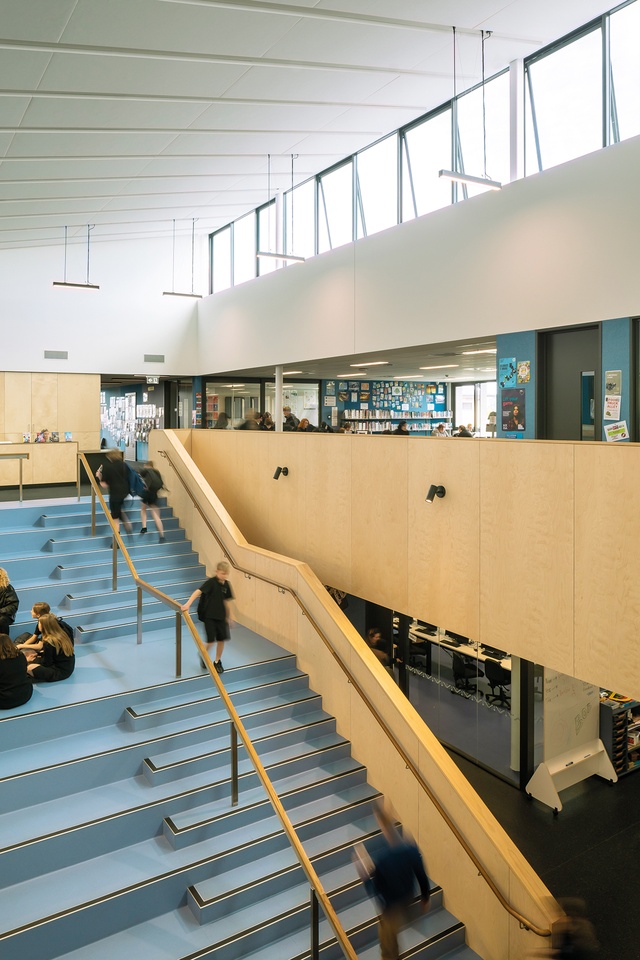
Board-finish concrete is left natural and exposed, and roof edges step to provide a fine edge at the extremities and show the nature of the roof material from beneath. Ceilings are omitted where possible and the services and structure exposed and painted white, demonstrating the way in which buildings are put together: an educational tool in itself. Acoustic panels and light fittings hang free in places, showing their roles clearly; this contrasts with the bland suspended tiled ceilings so common in schools. Those hide what the building is about and deal with acoustics and services in a non-articulated, simplistic manner. Once again, a group of individual elements, clearly expressed, come together to form a larger whole.
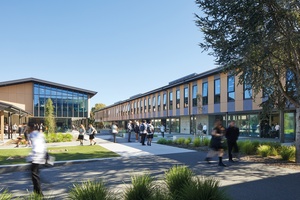
The central heart of the school is clad at the upper level in a through-coloured fibre cement panel, giving a consistency of look and patina to the college. On the east side only, this cladding comes right down to the ground, making this brittle material vulnerable to damage as a cracked panel by the entrance demonstrates. The rigour and clear thinking of the school design breaks down here, as the shear, two-storey wall of fibre cement comes straight down with minimal articulation and no sun shading. A result of value engineering rather than a decision from the architects, it shows the challenges of delivering schools in the current economically difficult times of irresistible cost increases meeting immovable school rebuild budgets.
Overall, though, Te Aratai is a demonstration of what can be achieved when you have a college with a clear vision that takes consultation seriously and takes the time to do it thoroughly, and an architect that treats it with respect and seriousness. It is a rigorous and rational design, also with many moments of fun and enjoyment, deeply informed by an idea of local community as well as a larger diverse global community. Te Aratai College, which was originally founded on progressive ideals in the 1950s, is now set up for a positive and progressive future well into the 21st century. It’s a place that sees us as a series of communities at all scales and levels of diversity working together for a greater good.
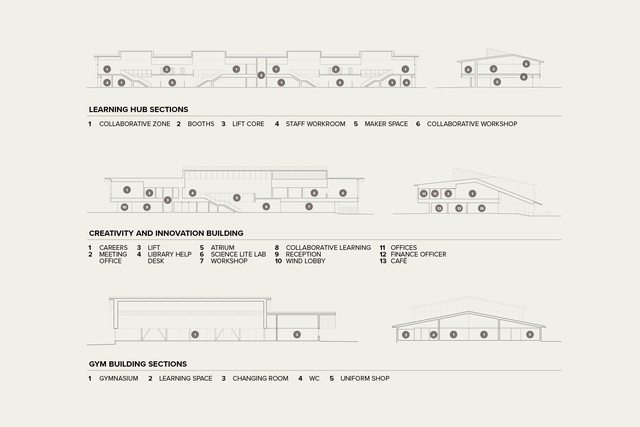
Project information
LOCATION: 85 Aldwins Road, Phillipstown, Christchurch
SITE AREA: 50,372m²
FLOOR AREA: 10,350m²
STOREYS: Two
TIME SCHEDULE: Design and documentation: 13 months, Construction: 16 months
CLIENT: Ministry of Education
ARCHITECT: Architectus
AWARDS: Ted McCoy Award for Education 2023


